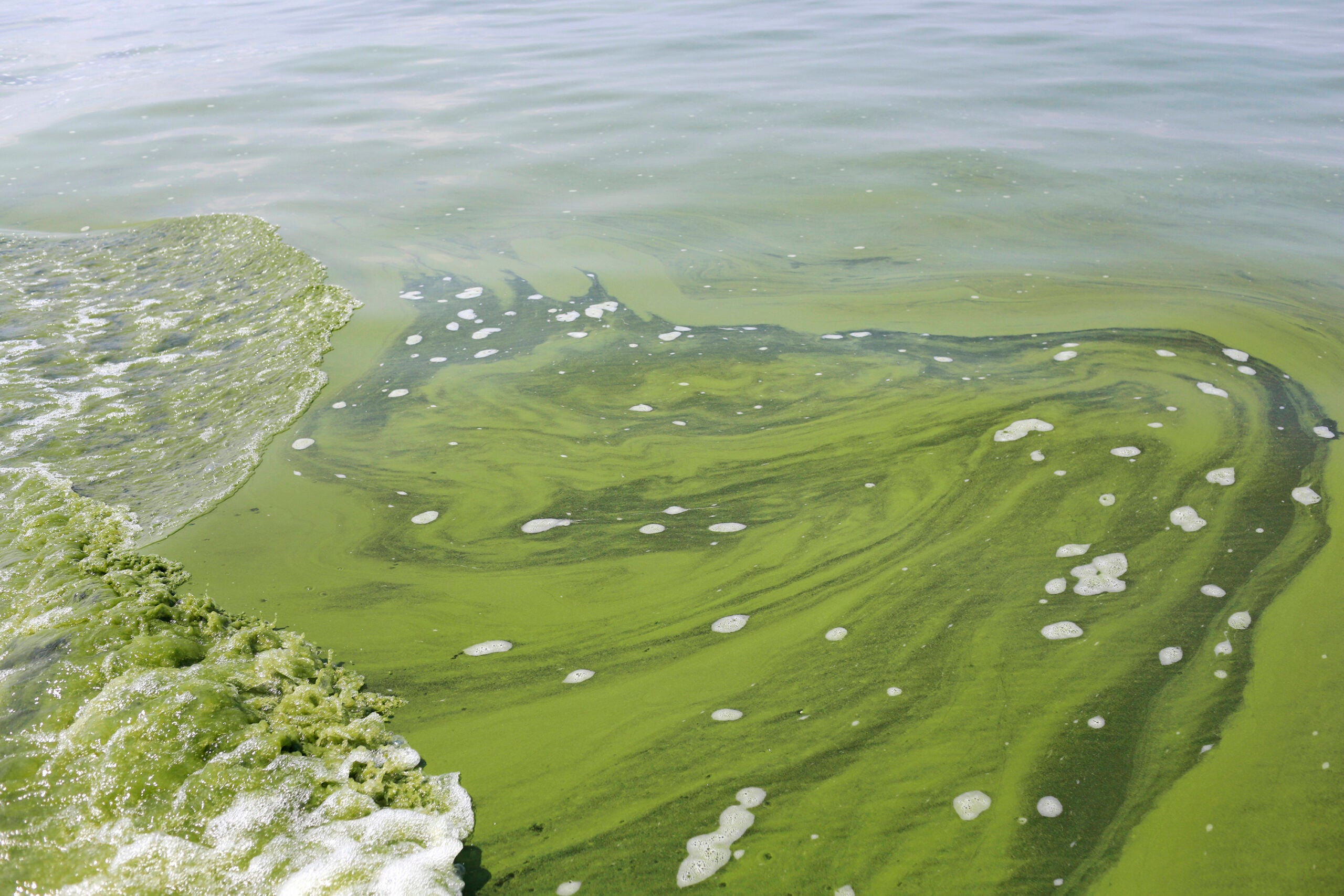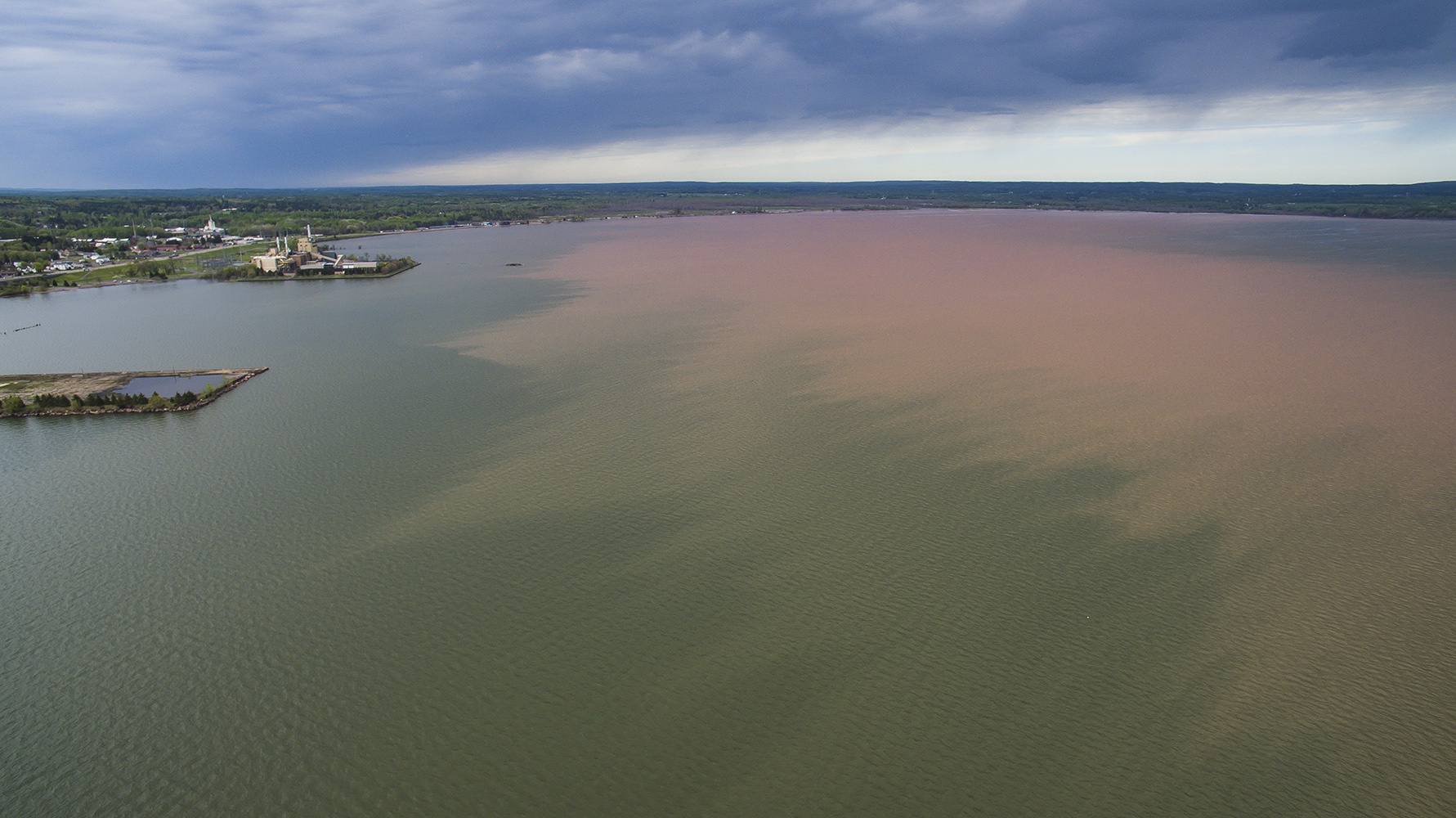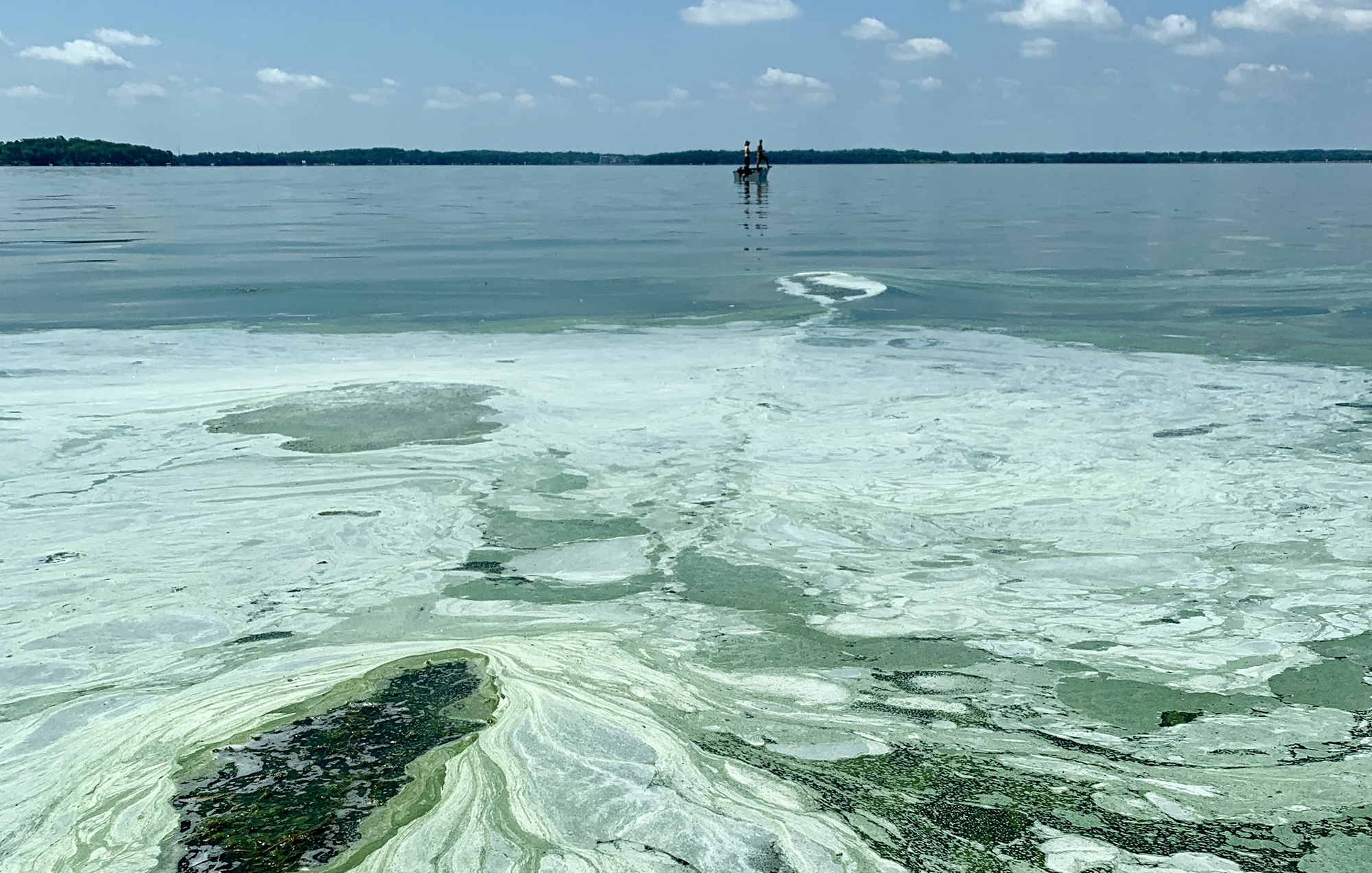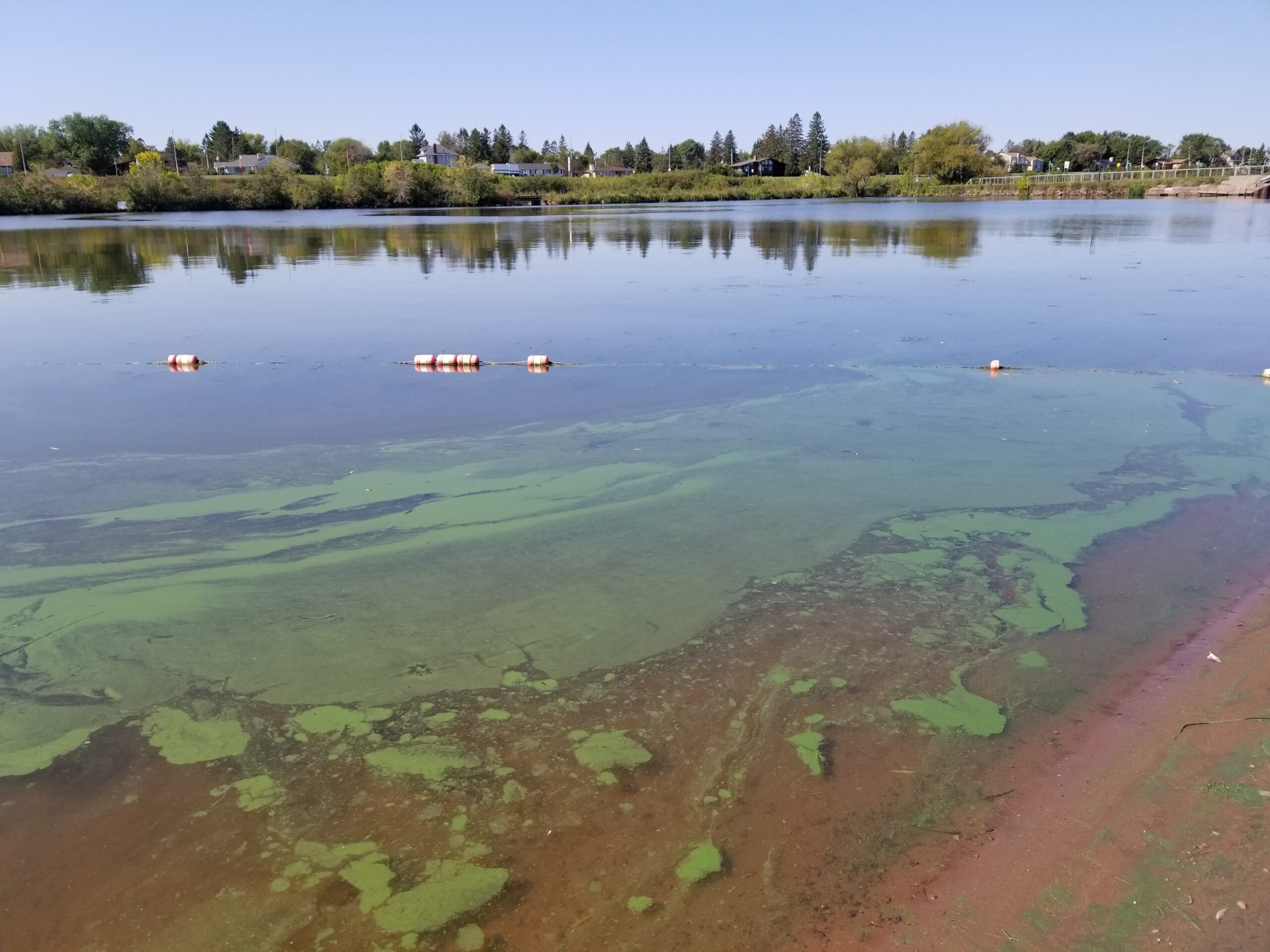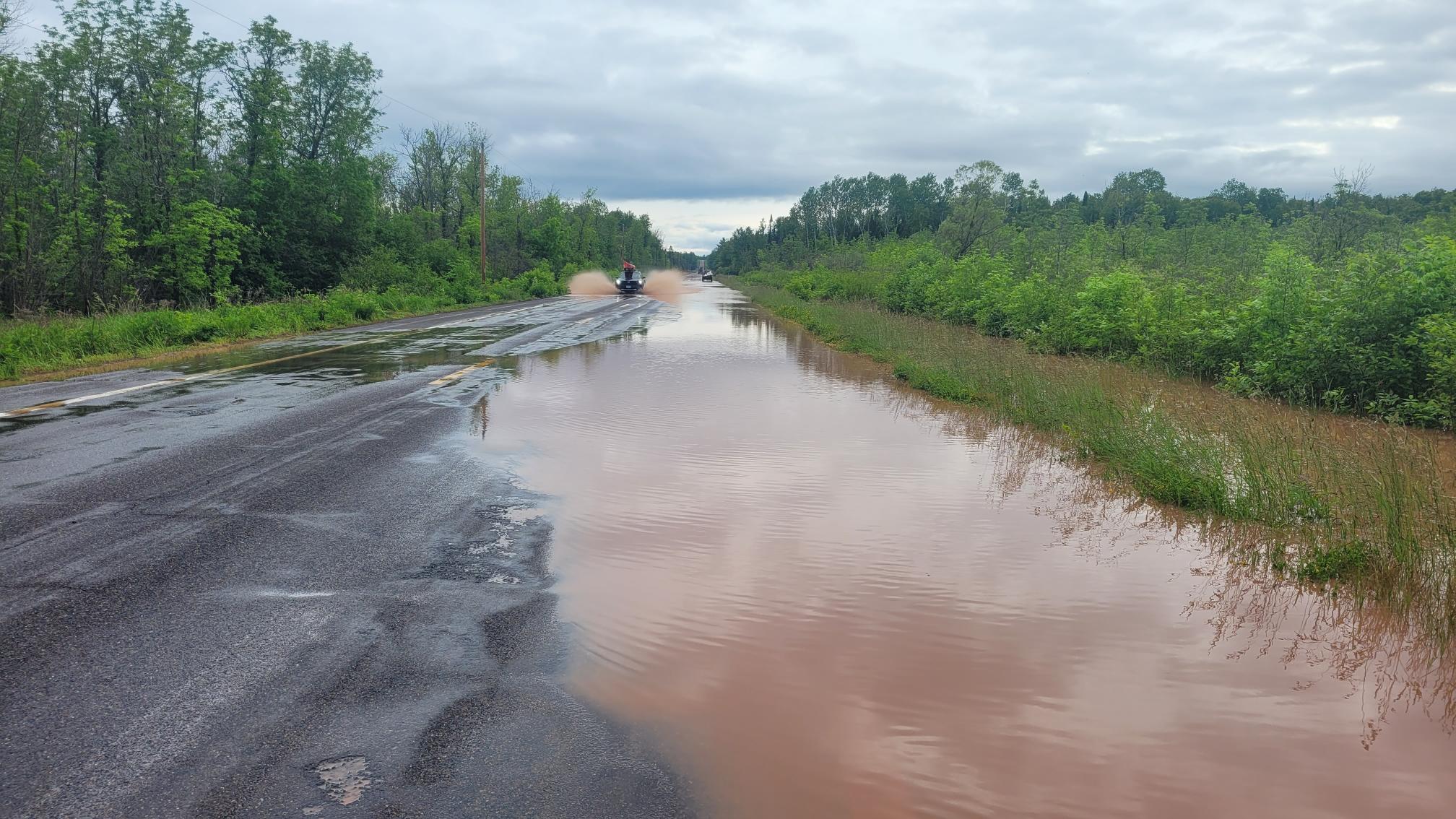Record rainfalls around Madison over recent weeks have caused a host of problems, but now that the rains have subsided and the weather has warmed, Madison-area lakes are primed for another threat: blue-green algae blooms.
Monday saw a cyanobacteria bloom on Lake Mendota along the shorelines of Marshall Park and Spring Harbor – and there are likely more to come, said Eric Booth, assistant scientist in agronomy and civil and environmental engineering at the University of Wisconsin-Madison.
“We’re going to be close to what we saw in 2008 and 1993,” he said. “Though it’s hard to predict, big years have resulted in very large amounts of phosphorus in lakes.“
Stay informed on the latest news
Sign up for WPR’s email newsletter.
Both years saw heavy rains and subsequently high algae bloom levels on the lakes.
The most recent bloom has come on top of an already busy summer in beach closures due to cyanobacteria, which can produce a variety of liver, skin and neurotoxins, said Kirsti Sorsa from Public Health Madison and Dane County.
Among all of the beaches the city of Madison and Dane County monitor, 119 beach days were lost to cyanobacteria blooms, compared to 53 days in 2017, she said. High numbers of beach closures due to blooms also happened in 2008 and 2009.
After the Aug. 20 flooding, all beaches were closed.
While it’s difficult to directly attribute Monday’s bloom to the recent continuous rainfall, it certainly didn’t help, said Paul Dearlove, watershed program director at Clean Lakes Alliance.
“Algae needs ingredients to grow,” Dearlove said. “Sunlight and fuel … phosphorus is the one ingredient that is critical, and a little change in phosphorus can be a large change in algae.”
Then, water to transport it. Rain carries phosphorus from farm fields and city streets into lake waters, and though it doesn’t have to be heavy rain, Booth is particularly interested in heavy rainfall related to phosphorus runoff.
“The relationship between rain and phosphorus movement isn’t linear,” he said. “One inch of rain and the amount of phosphorus it moves will not be twice that amount when 2 inches of rain falls, it’s likely more phosphorus.”
Both heavy rainfall and blue-green algae blooms are rising, Booth said.
While the Aug. 20 rainfall was a rare event, we can expect to see heavy rainfalls more frequently as the climate warms, said Steve Vavrus, senior scientist at the UW-Madison Nelson Institute Center for Climatic Research.
Middleton saw 11.63 inches of rain that day, according to the National Weather Service, and the National Oceanic and Atmospheric Administration atlas lists Madison’s 1,000-year rainfall magnitude at 9.92 inches over a 24-hour period, he said.
In an average year, the Madison lakes house high levels of phosphorus, but data following the historic rainfalls likely won’t be available until later in the fall, Booth said.
The blooms that pop up are often short-term weather related, but once phosphorus makes its way into the lakes, it takes a long time to flush it out, he said. Algae blooms that pop up next summer could still be related to phosphorus runoff from August’s rainfall.
“One silver lining to this is it happened during a time of year when there is more crop cover to prevent more runoff,” Booth said. “Two inches of rain in August is much different than 2 inches of rain in early June.”
Wisconsin Public Radio, © Copyright 2025, Board of Regents of the University of Wisconsin System and Wisconsin Educational Communications Board.
